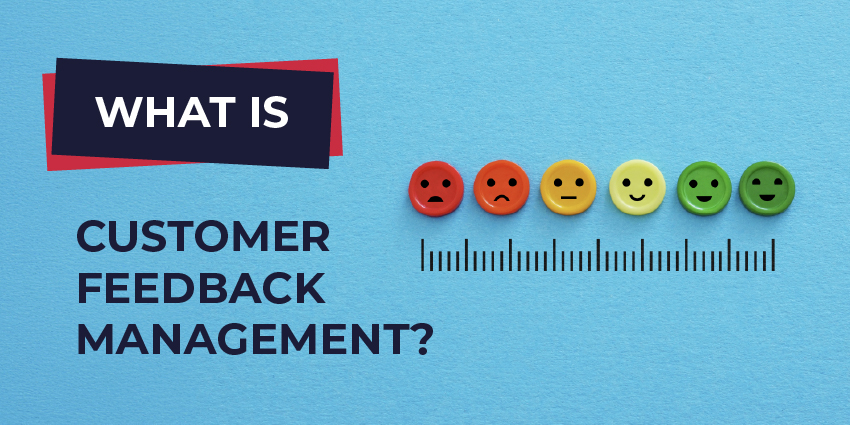Customer journeys are breaking apart. In banking, patients chasing care, or shoppers abandoning carts, the pattern looks the same: fragmented systems leave people repeating themselves and companies scrambling for context. CRMs were never designed to hold it all together. They track relationships, but they don’t unify data. That’s what Customer Data Platforms (CDPs) are for. What most companies don’t realize is how far Customer Data Platforms benefits go. These aren’t just glorified CRM upgrades, they’re becoming the backbone of workflow automation, AI adoption, and compliance.
They’re also a must-have in an era where first-party data has become crucial. In retail and eCommerce, CDPs now decide whether personalization feels seamless or invasive. For healthcare teams, they determine if data moves fast enough between portals, contact centres, and clinics to help patients instead of slowing them down. In finance, they’re becoming a line of defence -unifying records, flagging anomalies, and proving compliance to regulators.
What Is a CDP and Why It’s Not Just a CRM Upgrade
For years, the CRM has been treated as the central hub for customer data. But its design is narrow. It logs contacts, tracks deals, and manages service cases.
What it doesn’t do is unify every fragment of data a company holds – website visits, app behaviour, consent records, transactions, service interactions, marketing touches – into one, live profile that can be activated anywhere. That is the role of the Customer Data Platform.
A Customer Data Platform pulls first-party data from every corner – websites, apps, call logs, sales systems – and brings it into one place. The mess gets cleaned, duplicates are resolved, and what’s left is a living record of the customer that keeps updating. From there, it can do a lot: fuel AI models, trigger automated steps in the background, or simply give a frontline agent the context they usually waste time piecing together.
As Salesforce describes it, the platform moves data “from disconnected silos to real-time engagement.” Adobe takes it further, positioning CDPs as the only way to deliver “personalization at scale, powered by first-party data.”
For many CX teams, CDPs are now the foundation of any strategy for future growth. That’s part of why the market is growing so fast, at a rate of around 39.9% CAGR.
Measurable Customer Data Platform Benefits and ROI
Technology investments rise and fall on one question: do they pay back? In the case of Customer Data Platforms, the answer is increasingly clear. CDP benefits are measurable, and enterprises are using the data to justify spending at the board level.
The financial case is strong. A Forrester Total Economic Impact study of Oracle Unity found that companies achieved an ROI of 158% with payback in just seven months. The study pointed to efficiency gains in segmentation, campaign orchestration, and service response times.
The pattern repeats across industries.
- Telecoms: Spark NZ, working with Tealium and Snowflake, cut campaign delivery time by 80%. That speed translated into millions saved in media spend and higher response rates.
- Membership services: At AAA Washington, Salesforce Data Cloud unified data across channels to power faster, more relevant roadside support. The result was a jump in satisfaction scores and measurable cost savings as manual lookups disappeared.
- Retail: Klaviyo’s customers often cite faster payback than expected. At DKNY, Klaviyo helped to increase click rates and improve conversions by enabling end-to-end personalization.
But the benefits of a CDP often go further than expected, particularly in the age of AI and automation.
Customer Data Platforms as the Foundation for AI, Automation and Orchestration
Artificial intelligence and automation are boardroom priorities, but both depend on the quality of the data underneath. Without a trusted foundation, even the smartest models deliver the wrong outcomes. That is why CDP benefits now reach beyond marketing: they are powering AI decisioning and workflow orchestration across the enterprise.
Salesforce describes its Data Cloud as a “zero-copy CDP,” able to unify data across systems and activate it in real time. In practice, that means generative AI assistants like Einstein or Agentforce can draft responses, recommend actions, and even guide self-service troubleshooting – because the context is accurate. Adobe has taken a similar line, stressing that a CDP is the only way to make personalisation “real-time and scalable.”
Case studies bring this to life. Vodafone used Tealium to launch what it called an “AI-powered customer revolution”. By unifying subscriber data, the telecom giant improved cross-channel engagement by 30% and created new opportunities for automated retention campaigns.
Castore, a fast-growing sportswear brand, turned to Klaviyo’s CDP to scale its customer journeys and marketing campaigns, branching into four new SMS territories, and increasing click-through rates for AI-powered, automated campaigns.
Trying to automate on top of scattered data just makes the noise louder. With a CDP in place, orchestration feels sharper: actions run faster, responses land with more relevance, and journeys stay consistent. The same profile sits underneath everything – whether it’s an AI copilot, a bot handling routine work, or a self-service flow guiding a customer through a fix.
Customer Data Platform Benefits for Compliance, Security and Trust
Data is now under the same scrutiny as financial records once were. A misstep doesn’t just create headlines; it creates fines that hurt. Since GDPR came into force, regulators have handed out more than €5.6 billion in penalties, and the pace has only picked up in the last two years. For banks, insurers, and healthcare providers, fragmented data is a liability.
This is where a Customer Data Platform earns its keep, allowing enterprises to build compliance into the data layer itself. Every profile carries its own consent state. Every interaction can be logged against that consent. Sensitive fields can be masked automatically before they ever reach a campaign or a dashboard. The result: marketers can move quickly, while legal and risk teams know the audit trail is intact.
There are practical examples. Legal & General uses its CDP to improve real-time engagement, but compliance was part of the business case from the start. Data policies are enforced centrally, so every department works from the same set of rules.
A CDP doesn’t guarantee compliance on its own, but it gives organisations the framework they need to protect customers, and themselves.
Improved CX: Personalization and Omnichannel
Most people don’t notice a database. What they do notice is the experience: the email that lands with the wrong name, the app that asks them to log in again, the service agent who doesn’t know what happened last week. A Customer Data Platform exists to stop those seams from showing. That’s where some of the clearest CDP benefits come through.
The promise is simple enough: take signals from across the business, stitch them into a live profile, and feed them back into every channel. In practice, it means fewer repeated questions, less wasted spend, and more relevant offers. Analysts at Aberdeen have noted that organisations with a CDP in place see campaign response rates more than double.
An example? L’Oréal turned to Tealium to power personalization and improve media efficiency worldwide. The CDP became the bridge between consented first-party data and campaigns running in dozens of markets, ensuring local teams could tailor messages without compromising privacy.
Fisher and Paykel used the CDP from Salesforce to improve customer experience in another way – by giving clients a more efficient self-service experience. Agentforce now handles 65% of the company’s interactions, and 45% of customers book directly through AI. The company also benefits from a 50% reduction in call handling times, that means agents have more time to focus on other tasks.
CDP Benefits for Employees and Service Teams
Customer Data Platforms are usually sold on their marketing value, but the upside for employees is just as important. When data is scattered, staff spend time chasing records, re-entering details, or trying to match information between systems. It drags down productivity and morale. Unifying that data is one of the simpler benefits of a CDP, yet it can be the most visible inside the organisation.
For agents on the service desk, a unified profile means they no longer need to piece together a caller’s history from multiple screens. Instead, they see the journey in context – recent transactions, open tickets, even preferences collected elsewhere. Handle times drop, but so does frustration on both sides of the line.
There are clear examples. AAA Washington turned to Salesforce Data Cloud to give service agents a single view of member profiles. The organization described how AI agents could act on those profiles to dispatch roadside help faster and more accurately, without the risk of burnout.
Customer Data Platform Benefits for Business Leaders: Unified Insights and ROI
For executives, the challenge is rarely a lack of reports. It’s the opposite. Every department has its own dashboards, each with different numbers, often telling different stories. Decisions slow down because no one is sure which version of the truth to trust. This is where one of the more overlooked benefits of a CDP comes in: a single, reliable view that leadership can use with confidence.
There’s a strategy angle too. Once unified profiles start feeding into AI, executives can pick up churn risks before they hit the numbers, forecast with more certainty, and shift spending based on what customers are actually doing right now. It cuts down the boardroom surprises – and avoids the frantic catch-up when forecasts and reality don’t match.
The Adecco Group is a case in point. By implementing Salesforce Data Cloud across its global workforce solutions business, the company gave executives access to a 360-degree view of both clients and candidates. Its Chief Digital & Information Officer explained that AI now powers recommendations across the business, backed by trusted data. The CDP benefits in this case weren’t limited to marketing metrics; they reshaped how Adecco planned and delivered strategy.
The Customer Data Platform Benefits Enterprises Can’t Overlook
Much of the discussion around CDP benefits centers on personalization or marketing efficiency. Important, but not the whole story. Some of the biggest advantages are the ones that don’t always make it into vendor slides.
One is data quality for AI. Models are only as strong as the information they’re trained on. A Customer Data Platform acts as a safeguard, filtering personal data where it shouldn’t be used and ensuring inputs are consistent. That makes AI outputs more reliable – and less risky when it comes to privacy or bias.
Another is collaboration. Increasingly, organizations are using data clean rooms – neutral environments where they can share insights with partners without exposing raw records. CDPs can plug directly into these environments, allowing a retailer and a brand, or a hospital and a research partner, to coordinate using anonymised datasets.
Governance often gets left until last, but a CDP brings it right into the data layer. Consent tags travel with the customer wherever their information is used. If someone withdraws permission, that state follows them, blocking future use automatically.
These Customer Data Platform benefits aren’t flashy like a dashboard or a campaign, but they carry more weight. They shape whether AI scales responsibly, whether data partnerships work, and whether trust with customers holds firm.







